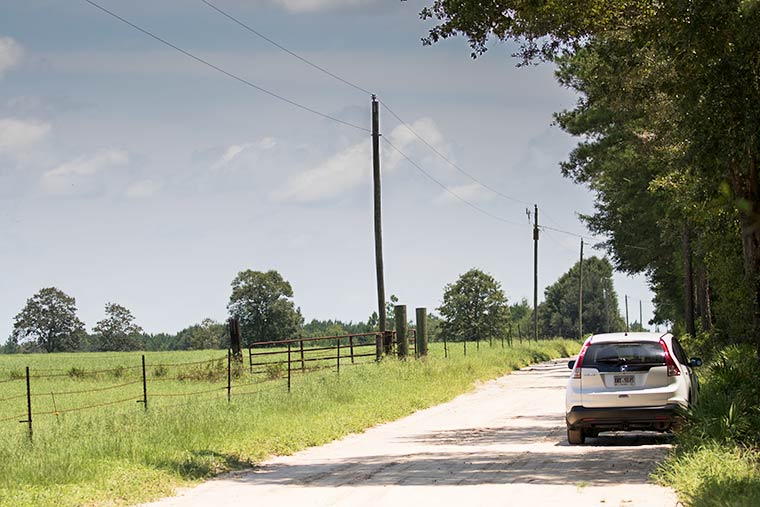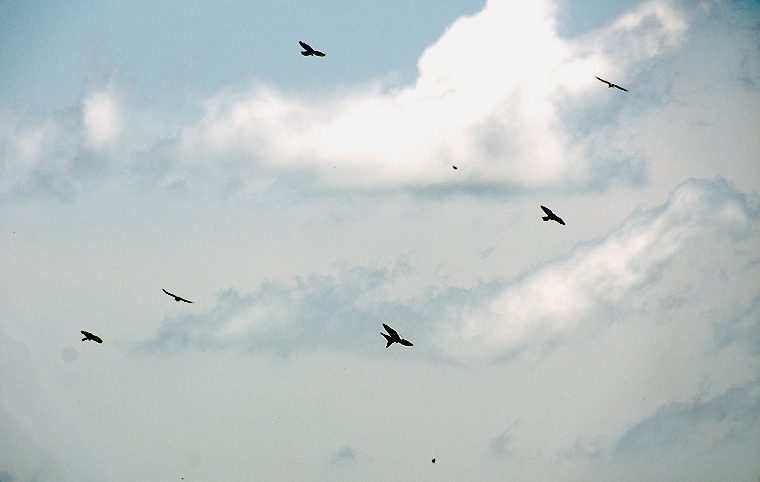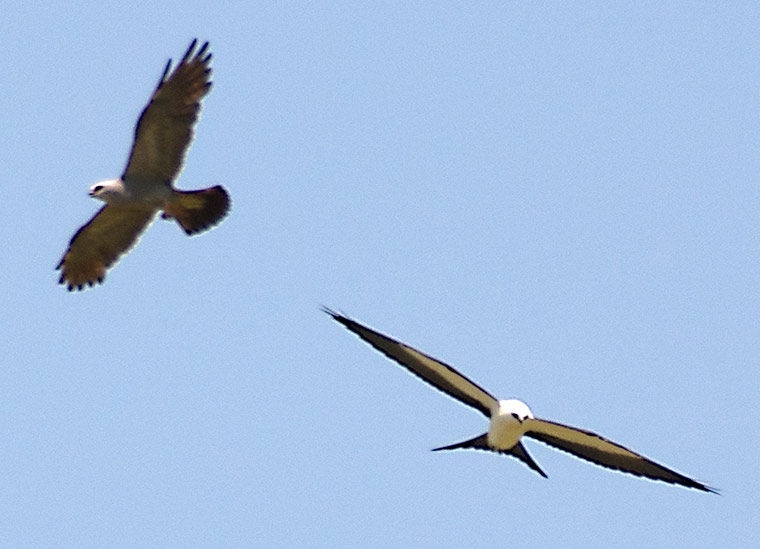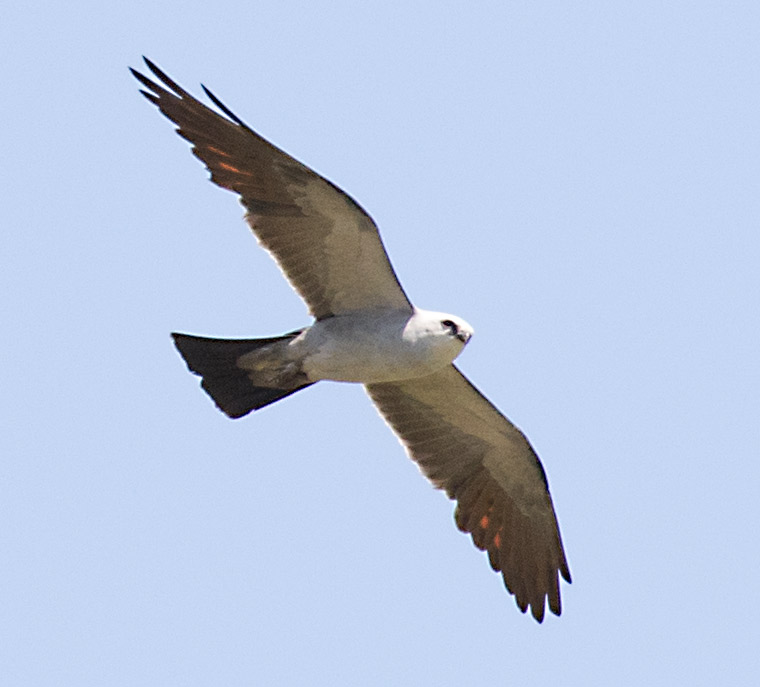We recently drove down to South Georgia to see some kites…not the kind on a string, but Swallow-tailed Kites (Elanoides forficatus) and Mississippi Kites (Ictinia mississippiensis), two of our more spectacular raptors. Both of these birds nest in Georgia. After the young have fledged, they gather in mixed flocks to fatten up before their long migration flight to South America for the Winter.
Here is one of the places we stopped, a hay field next to a dirt road. There were lots of birds in the air over the field to the left.
It was a mixture of Mississippi Kites (upper left) and Swallow-tailed Kites (lower right).
Swallow-tailed Kites are instantly recognizable. No other bird resembles them. They are black and white with a distinct V- shaped tail. Swallow-tailed Kites are large…their wingspan is about 48 inches…and they are masters of flight. They soar, dive, and wheel about in the sky in a seemingly effortless and graceful fashion. Most of their food is plucked out of the air or snatched off of vegetation as the bird swoops past. They eat a great variety of foods, but they are primarily insectivores. Cicadas, grasshoppers, dragonflies, and beetles are favorite targets. They are, however, opportunistic feeders, and will take amphibians, reptiles, small birds and mammals, including bats, on occasion.
Mississippi Kites are slightly smaller than Swallow-tailed Kites (wing-span of about 38 inches) and are more plainly marked. They also have a varied diet, but eat a lot of insects. They are also very agile fliers who can catch dragonflies in the air. They sometimes follow cows or horses and eat the insects flushed by the animals.
In some cases, Mississippi Kites have nested in urban areas or along golf courses. When they have young in the nest, they can be very aggressive toward humans who get too close. They will dive down at the people, but very seldom actually strike the intruder. However, they could be serious trouble for someone riding a bicycle, or an older person, because they could cause a fall.
Why were all these kites congregated over this field? See the next post in this series!
Discover more from A Naturalist's Journal
Subscribe to get the latest posts to your email.






Gary,
A nice one and excellent photos – taken on a small camera?
I am just going off to Svalbard for a week on Ortelius on a Polar Bear Special. The offer came through at the week end so its been bit of a rush.
Love and best wishes to you and Joycefrom us both,
John
These were taken with my new Canon 7D MKII and Canon 100-400 LII!
Absolutely beautiful birds in flight.